Iguazú Falls Travel Guide: Natural Wonder With 275 Waterfalls
In this Iguazu Falls travel guide you will discover a natural wonder shared by two national parks and spanning two countries, boasting 275 waterfalls.
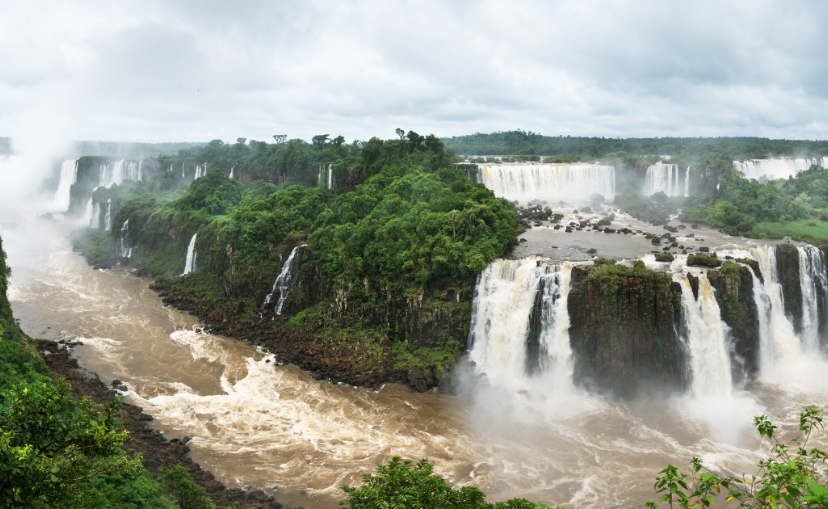
What Is Iguazu Falls?
Iguazu Falls is the world’s largest waterfall system and one of the most breathtaking natural wonders you’ll ever see. It’s one of the most impressive sights to see for outdoor lovers, photographers and travelers craving unforgettable views, incredible power, and a touch of adventure.
Iguazu Falls isn’t just a single waterfall; it’s actually a massive system of about 275 individual falls that are created by the Iguazu River. The falls are spread across two national parks—located in both Argentina and Brazil— covering a distance of 3 kilometers (1.86 miles).
While many of the falls are clustered closely together, they are spread far enough apart that it creates a breathtaking series of cascades throughout the landscape.
What Cities Are Close To Iguazu Falls?
The two main cities located near Iguazu Falls, one on each side of the border, are: Puerto Iguazú (Argentina), and Foz do Iguaçu (Brazil).
Both cities offer easy access to the Falls and serve as ideal bases for visitors looking to explore the natural wonder from either side of the border.
The name “Iguazu” comes from the native Guarani Indian language, meaning "big water"—and once you see the sheer volume of water cascading over the cliffs, you’ll understand why.
A National Park With UNESCO Status
Iguazu Falls holds the prestigious title of being a UNESCO World Heritage Site, recognized for its immense natural beauty and biodiversity. The falls are protected within national parks on both sides:
- Iguazú National Park (Argentina side) was designated as a UNESCO World Heritage Site in 1984)
- Iguaçu National Park (Brazil Side) was designated in 1986)
These parks and UNESCO designation ensure not just the preservation of the waterfalls but also the rich rainforest ecosystem that surrounds them.
Best Ways To Visit Iguazu Falls
Visiting Iguazu Falls is not a hard or rugged hike—there are clear, easy paths and trails to hike on both the Argentine and Brazilian sides that allow you to see the waterfalls without difficulty.
While there are lot's of different hiking trails through out both parks, some with varying levels of difficulty, for those simply wanting to explore the waterfalls—the parks are designed to be accessible to visitors of all ages and fitness levels, and the walkways are well-maintained to the most popular waterfalls.
Here’s a breakdown of all the different ways you can get around and see the falls:
Take A Ride On The Ecological Jungle Train – Argentine Side
- Overview:
On the Argentine side, the Ecological Jungle Train is the main way to move between key parts of Iguazú National Park. It’s an open-air, eco-friendly train that makes stops at:- Central Station (near the park entrance).
- Cataratas Station (for access to the Upper and Lower Circuits).
- Garganta del Diablo Station (for Devil's Throat).
Enjoying a peaceful, scenic ride through the jungle while saving your energy for hiking the trails. It’s also a convenient way to get to the Devil’s Throat walkway.
Walking Trails - Argentine and Brazil Sides
The most popular way to explore the falls, and the national parks they're located in is by exploring the park’s network of trails:
- Upper Circuit (Argentina): The Upper Circuit of Iguazu Falls is a trail that offer a panoramic, bird's-eye view of the falls, providing a unique experience without the need for stairs. This 1,750-meter trail, starting near the Cataratas (waterfalls) Station, takes about two hours to complete, offering incredible vistas of the falls' horseshoe shape while being easily accessible to most visitors.
- Lower Circuit (Argentina):
The Lower Circuit is a 1,700-meter circular path offering access to eight breathtaking viewpoints, each providing a distinct perspective of the falls. Positioned beneath the waterfalls, it allows visitors to feel the sheer force of the water as it plunges from above. The Lower Circuit at Iguazu Falls is a must-do for anyone looking to fully experience this incredible natural wonder. - Devil’s Throat Walkway (Both Sides): The Argentine side offers a long walkway that leads to the edge of the most powerful section of the falls.
- Argentine Side: The Devil’s Throat walkway on this side provides a more immersive experience. A long, elevated walkway stretches about 1.1 kilometers across the Iguazu River, taking visitors right to the edge of the falls' most powerful section, the Devil’s Throat (Garganta del Diablo). Here, you’ll be able to stand just above the roaring water as it plunges down, feeling the intense spray and hearing the deafening sound of the falls.
- Brazilian Side: While the Brazilian side doesn't bring you as close to the falls, it offers sweeping panoramic views of the Devil’s Throat. The main trail that leads to panoramic views of the falls is often referred to as the Cataratas Trail, but it's not related to the Cataratas Station in Argentina.
The Upper Circuit at Iguazu Falls is often seen as easier to traverse than the Lower Circuit, thanks to its flatter, more accessible path with fewer stairs. This makes it a suitable option for most visitors, including those with limited mobility.
Explore The Falls By Boat
For an adrenaline-pumping adventure, both sides of Iguazu Falls offer exhilarating boat tours, with the Macuco Safari on the Brazilian side being the most popular. These powerful boats take you up the river and right into the heart of the falls' spray, ensuring a thrilling, drenching experience.
For thrill-seekers wanting to feel the raw power of the falls up close, this is the ultimate way to connect with this natural wonder. No matter how you explore the falls, this is the only way to truly "feel" their force.
I wish I had worn swim trunks for the boat tour—wet jeans in a humid jungle are no fun! But it was an unforgettable way to experience Iguazu Falls. Unlike other viewpoints, this tour lets you truly feel the falls. The boat's vibrations, the roar of the water, and the mist engulfing you are sensations everyone should experience.
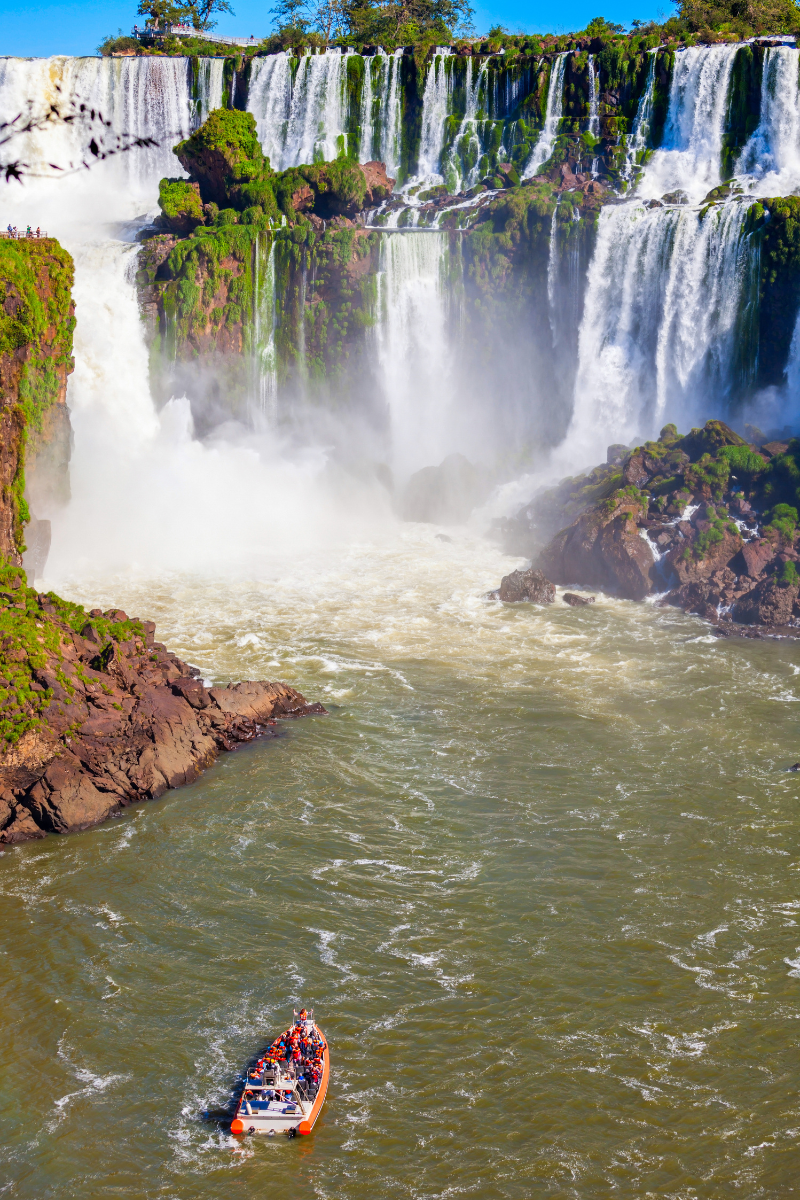
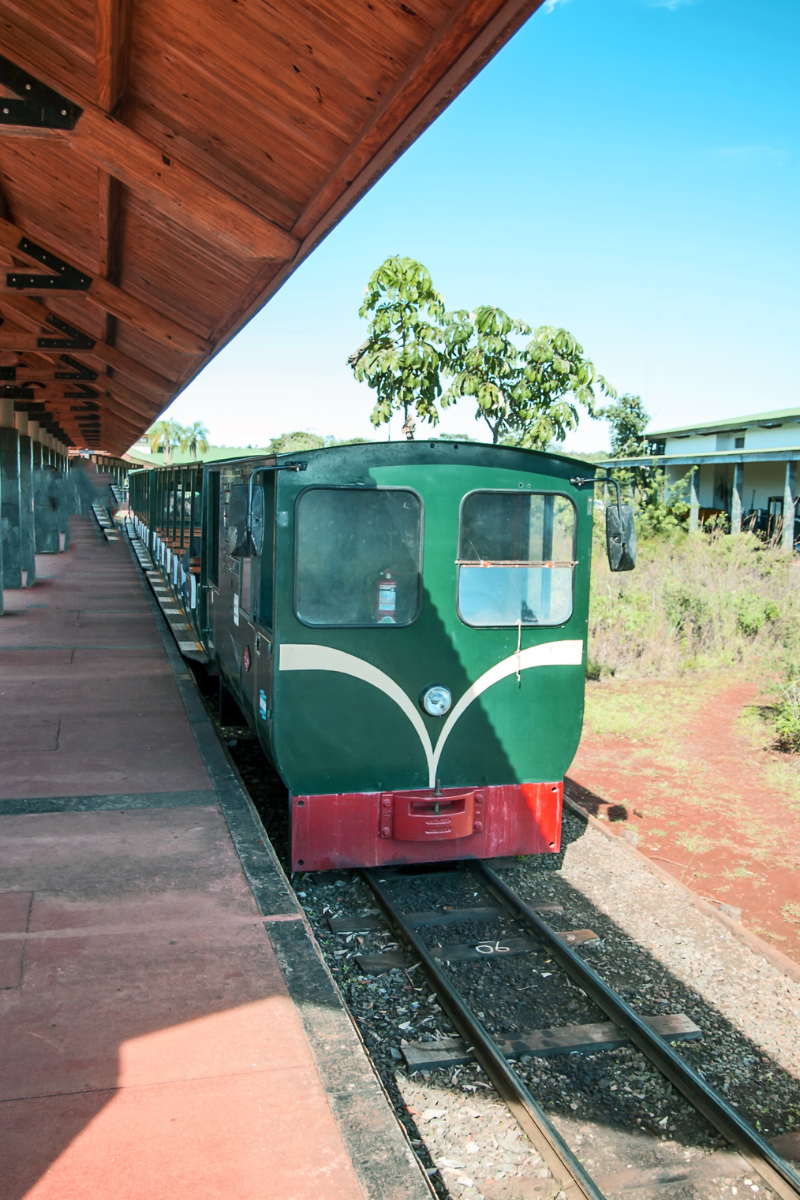
Popular Sights and Activities Near The Falls
There’s no shortage of activities at Iguazu Falls, whether you’re a thrill-seeker or prefer a more relaxed visit:
Popular Activities
Visiting Iguazu Falls is more than just admiring the stunning waterfalls — both the Argentine and Brazilian sides offer a variety of activities that allow visitors to immerse themselves in the beauty of the falls and the surrounding rainforest. Here are some of the most popular activities you can enjoy inside the parks:
Devil’s Throat Walkway (Garganta del Diablo)
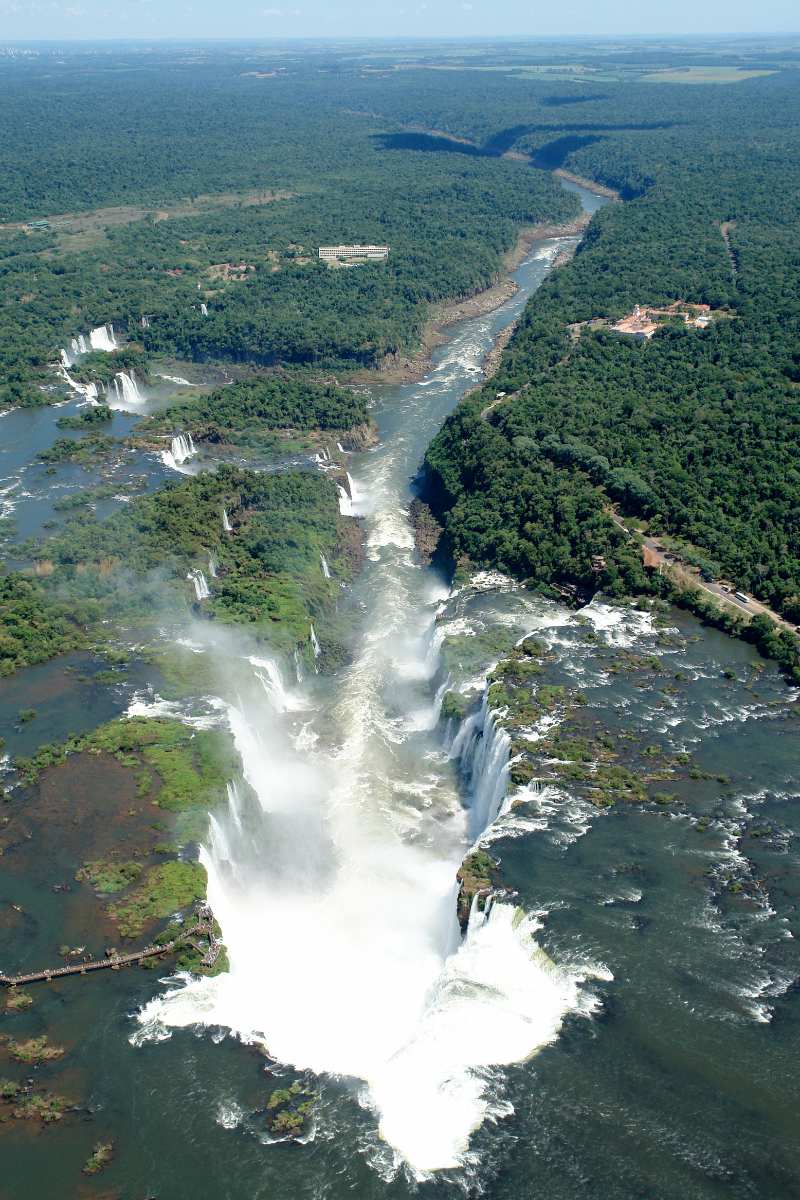
- Where: Argentine and Brazilian sides
- What: A highlight of any visit, the Devil's Throat is the most dramatic section of the falls. On the Argentine side, you can walk along a steel walkway that takes you directly to the edge of the powerful waterfall. On the Brazilian side, you get a panoramic view of the entire Devil's Throat section.
- Why it’s popular: It's the most awe-inspiring and powerful part of Iguazu Falls, offering an up-close experience of the sheer force of the water.
Upper and Lower Circuit Trails (Argentina)
- Where: Argentine side
- What: The Upper Circuit offers elevated views from above the falls, while the Lower Circuit lets you explore at the base for a closer, ground-level perspective. Both circuits are easy to walk and filled with scenic lookout points.
- Why it’s popular: You get unique views of the various waterfalls, and the Lower Circuit, in particular, provides a more immersive experience, bringing you closer to the action.
Macuco Safari Boat Ride
- Where: Brazilian side
- What: This thrilling boat ride takes you right into the mist and spray of the falls. The boat zooms through the river before reaching the base of the waterfalls, where you’ll get drenched in the powerful spray.
- Why it’s popular: It’s an adrenaline-pumping experience that lets you feel the raw power of Iguazu Falls up close. Prepare to get wet!
Jungle Trekking and Wildlife Spotting
- Where: Both sides
- What: The parks surrounding Iguazu Falls are home to subtropical rainforests rich with biodiversity. There are several trails where you can hike through the jungle and spot wildlife like coatis, toucans, monkeys, and butterflies.
- Why it’s popular: For nature lovers, it’s an opportunity to explore the lush environment and see exotic wildlife in their natural habitat.
Helicopter Ride Over the Falls (Brazil)
- Where: Brazilian side
- What: A thrilling helicopter ride gives you a bird’s-eye view of the falls. This is the only way to get a complete, panoramic view of the entire Iguazu Falls system from above.
- Why it’s popular: It’s the best way to appreciate the scale of the falls, as you’ll be able to see the entire system, the surrounding rainforest, and the rivers below in one sweeping view.
Bird Park (Parque das Aves)
- Where: Brazilian side, near the entrance to Iguaçu National Park
- What: Just outside the park, this bird sanctuary houses hundreds of species of tropical birds, including toucans, parrots, and flamingos. You can walk through the aviaries and see these colorful creatures up close.
- Why it’s popular: It’s a great family-friendly activity that allows you to learn about and see the vibrant birdlife of the region.
Rappel and Zip Lining
- Where: Both sides (offered by tour companies nearby)
- What: Adventure lovers can sign up for rappelling down rock faces near the falls or zip-lining through the canopy of the surrounding rainforest.
- Why it’s popular: It adds a thrilling and adventurous element to your visit, letting you explore the natural beauty of the area in a more active, high-energy way.
Most Impressive Waterfalls To See at Iguazu Falls
- The most famous and dramatic fall, the Devil's Throat (Garganta del Diablo), is a massive U-shaped waterfall that marks the most powerful section of the falls. This one is a must-see and sits at the center of the system.
- Other smaller waterfalls, like Bossetti Falls, San Martin Falls, and Dos Hermanas Falls, are distributed throughout the park. They vary in size and are connected by walkways and trails on both the Argentine and Brazilian sides, which allows visitors to explore them from different perspectives.
- Some falls are more accessible on the Argentine side, where walkways take you up close, while the Brazilian side provides more panoramic views of the entire system.
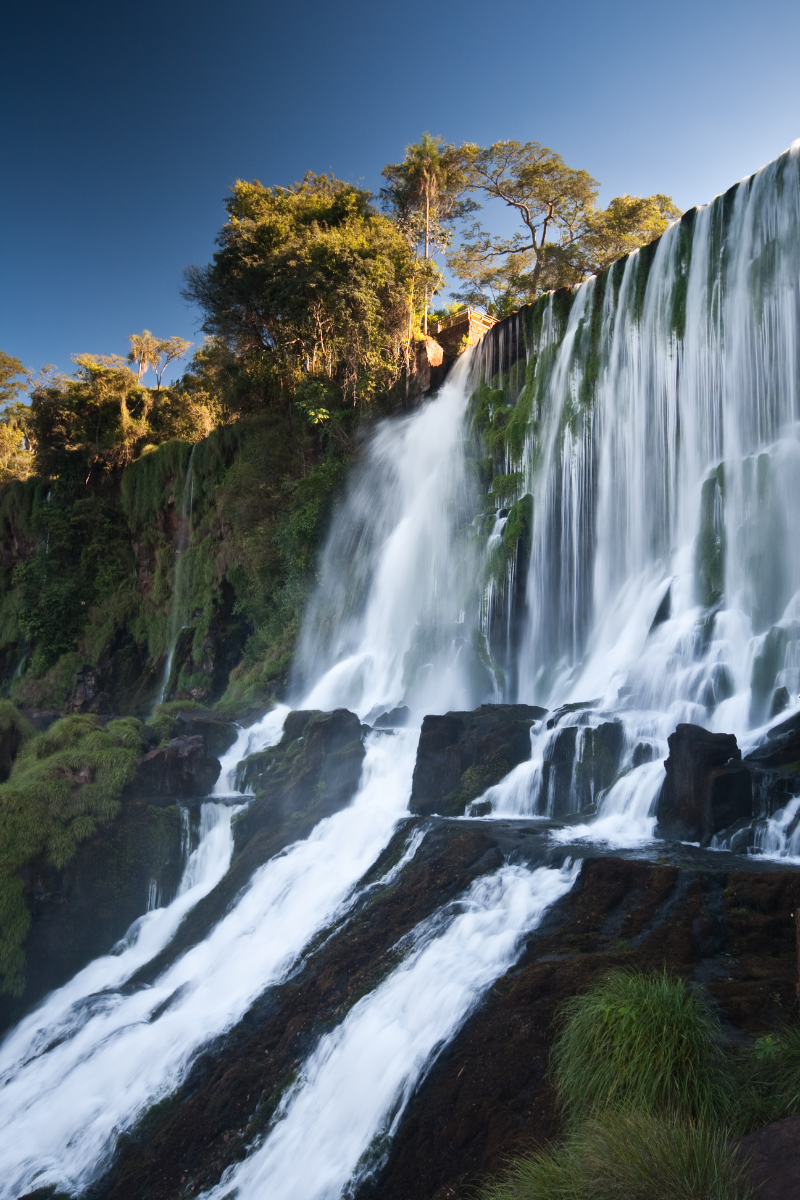
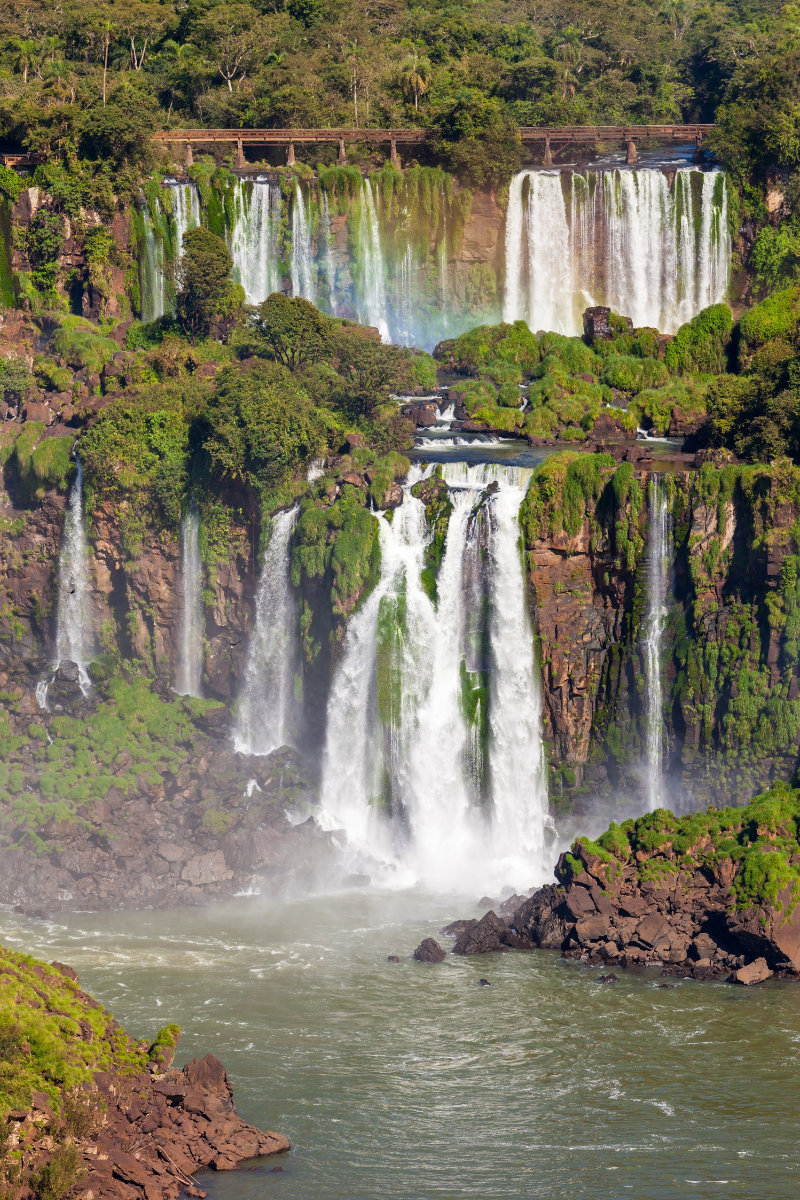
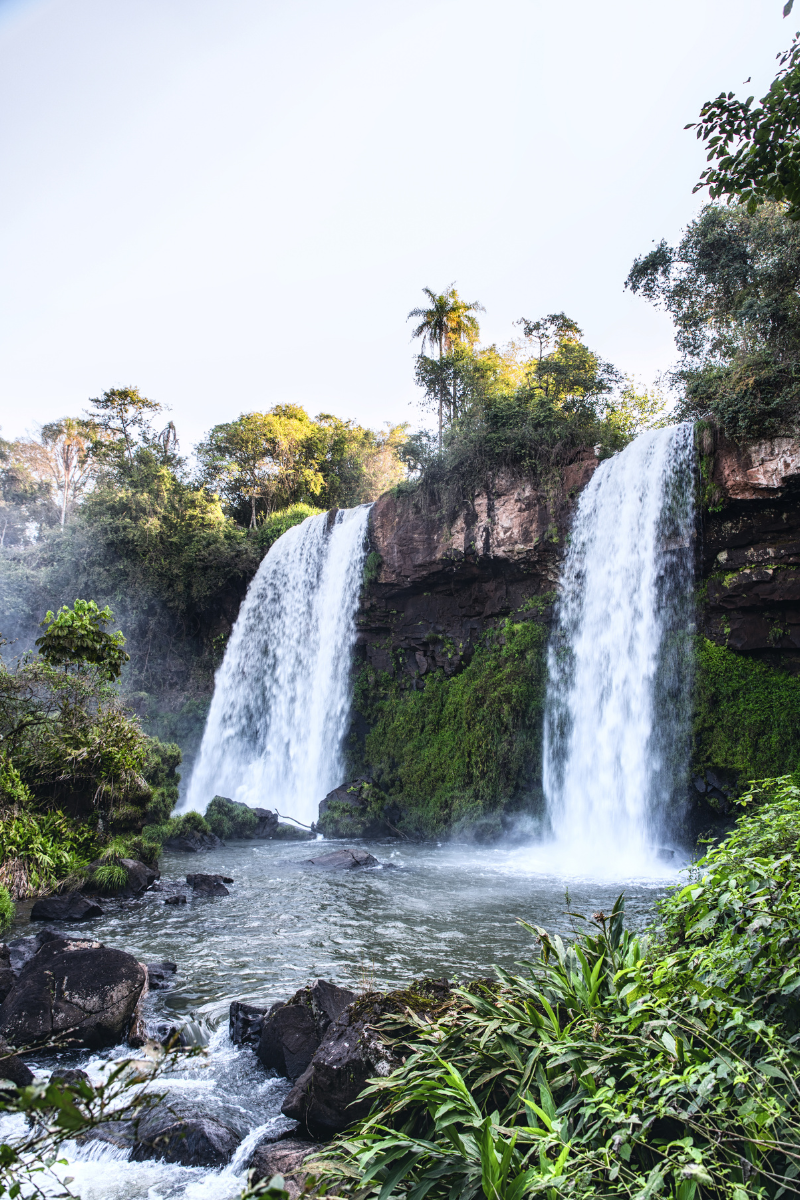
Native Plants Unique to the Iguazu Falls Area
The lush rainforest surrounding Iguazu Falls is home to an incredible variety of native plants, some of which are unique to the region. Here are a few notable species you might encounter:
- Palmito Trees: These tall, slender palm trees are commonly found in the rainforest near the falls. Their hearts, known as "hearts of palm," are often used in local cuisine.
- Yerba Mate: This plant is native to the region and is used to make mate, a traditional tea-like drink popular in Argentina, Brazil, and Paraguay.
- Orchids: The Iguazu region is home to a variety of orchid species, many of which thrive in the humid, misty environment around the falls. Some of these orchids are endemic to the area, adding to its botanical richness.
- Bromeliads: These striking, colorful plants are found clinging to trees throughout the rainforest. They’re part of the pineapple family and thrive in the damp, shaded areas near the falls.
- Araucaria Trees (Paraná Pine): These ancient trees are native to the region and can be found in the higher elevations around Iguazu. Their unique, umbrella-like shape makes them easy to recognize.
The subtropical rainforest around Iguazu Falls is incredibly biodiverse, with many plants thriving in the humid, misty environment created by the waterfalls themselves. It’s a perfect destination for botany enthusiasts!
What Wildlife Will You See at Iguazu Falls?
Iguazu Falls is not only famous for its stunning waterfalls but also for the rich variety of wildlife in the surrounding national parks. Here’s a look at some of the fascinating animals you might encounter:
- Coatis: These raccoon-like animals are common in the park, often seen along the walkways. Be careful with your food—they're known to steal snacks!
- Toucans: Known for their bright, colorful beaks, these birds are frequently spotted in the trees around the falls.
- Monkeys: The most common are capuchin monkeys, often seen swinging from branches or scampering through the trees.
- Caiman: Found in the rivers and wetlands around the park, these small crocodiles are often spotted basking in the sun.
- Jaguars: While rare to see, the surrounding jungle is home to jaguars, though they tend to stay deep in the forest away from visitors.
- Butterflies: The area is filled with a wide variety of beautiful butterflies, often landing on visitors.
- Birds: In addition to toucans, you’ll see parrots, eagles, and many other exotic bird species, making it a paradise for birdwatchers.
Plan Your Trip
Entry Fees
There is an entry fee of $20 for both the Argentine and Brazilian sides of the falls if you are a foreign visitor.
- There are discounts for children, and depending on their age they can get in for free, here is a complete break down of cost for both parks.
- Disabled Persons and their company do not pay on the Argentine side.
Private Guided Tours
You can save lots of money on private tours using GetYourGuide.com, and cancel anything for a full refund up until 24 hour prior to the start of your guided tour. Here are our favorite guided tours, but you will see the full list of options by viewing any of them below, as well as other area attractions, like Kayaking, Bird Watching Tours.
Border Crossing and Immigration
There is no border crossing or customs and immigration located inside the parks. Since the waterfalls of Iguazu Falls are located in two different countries—Argentina and Brazil—you will need to exit the park in one country and enter the park in the other if you want to visit both sides of the falls. This means you will have to go through a border crossing and customs/immigration procedures.
Here’s how it works:
- Leaving one park:
If you’re on the Argentine side (Parque Nacional Iguazú) and want to visit the Brazilian side (Parque Nacional do Iguaçu), you’ll need to exit the Argentine park, cross the border, and go through immigration into Brazil. - Customs and Immigration:
You will need to go through customs and immigration checkpoints as part of the border crossing. Both Argentina and Brazil have immigration offices near the border. You’ll need to show your passport, and depending on your nationality, you might also need a visa for either Brazil or Argentina. Most travelers can cross without major issues, but it’s always best to check visa requirements for your nationality before traveling. - Re-entering the park:
Once you’ve crossed the border and gone through immigration, you can enter the national park on the other side. You will have to pay the entry fee again when entering the park in the new country, as park tickets are only valid for one side.
How to Make the Border Crossing Easier:
- Transportation:
Taxis, shuttle services, and even public buses regularly make trips between the two sides, helping visitors cross the border smoothly. Many hotels in both Puerto Iguazú (Argentina) and Foz do Iguaçu (Brazil) can help arrange transport and provide guidance on crossing the border. - Day Trip:
If you’re staying in one country, a day trip to the other side of the falls is very common. You can cross the border in the morning, visit the other side, and return the same day.
Things to Keep in Mind:
- Visa Requirements:
Check the visa requirements for both Argentina and Brazil before your trip. Some nationalities need visas for Brazil but not Argentina, and vice versa. For example, U.S. citizens no longer need a visa to visit Brazil as of recent changes, but this may differ for other nationalities. - Border Crossing Times:
The border crossing between Argentina and Brazil is usually efficient, but during peak tourist times, it can take a bit longer due to the volume of visitors.
Should You See Both Sides?
I highly recommended to visit both the Argentine and Brazilian sides, as each side offers a different perspective of the waterfall system. While you can see a significant portion of the falls from either side, you won’t get the complete picture unless you visit both countries.
The Experience In Each Country
Argentine Side (Parque Nacional Iguazú):
- Close-Up Views: The Argentine side allows you to get up close to many of the individual waterfalls. It has an extensive network of walkways that take you to both the upper and lower parts of the falls, and right to the edge of the most dramatic section, Devil’s Throat (Garganta del Diablo). This side gives you an immersive experience, where you can walk right alongside and even above the waterfalls.
- Perspective: You won’t see the full panorama of the falls, but you’ll experience the raw power and beauty up close. The Argentine side contains about 80% of the falls, so you’ll see a large portion of the system here.
Brazilian Side (Parque Nacional do Iguaçu):
- Panoramic Views: The Brazilian side provides sweeping panoramic views of the falls, which is something you can’t get from Argentina. From here, you can see the entire waterfall system spread out in front of you, which gives a breathtaking sense of its scale. The Brazilian side also has a short walkway that brings you close to Devil’s Throat, but not as close as on the Argentine side.
- Perspective: You see about 20% of the falls up close, but the panoramic views let you appreciate the overall scale of the entire system in a way that’s harder to capture from Argentina.
Do You Need to Visit Both Sides?
- If you visit only the Argentine side, you’ll get up-close views and a more immersive experience, but you won’t be able to appreciate the full panoramic beauty of the falls.
- If you visit only the Brazilian side, you’ll see the spectacular full view of the falls, but you’ll miss the intimate, up-close experience of walking alongside and over some of the waterfalls.
To truly appreciate Iguazu Falls in all its grandeur, it’s best to visit both sides. Each offers a unique experience, and together, they give you a complete picture of one of the world’s greatest natural wonders.
Which Side is Better: Argentina or Brazil?
This is one of the most common questions I get when someone I know is planning a trip to Iguazu Falls. The answer depends on what you’re looking for, but here’s a quick breakdown:
- Argentina: The Argentine side allows for a more immersive experience, with walkways that take you right to the edge of the waterfalls. One of the highlights here is the Devil’s Throat (Garganta del Diablo), where a platform lets you stand next to the roaring water. This side is perfect if you want to feel up-close and personal with the falls.
- Brazil: On the Brazilian side, you get the full panoramic view of Iguazu Falls, offering a sweeping look at the entire system. The Brazilian side is also less crowded, and it’s great for photographers looking for that wide-angle shot of the falls.
My Opinion: Visit both sides! They offer different perspectives, and together, they give you a complete experience of Iguazu’s grandeur. However, if you only have time to visit one side, you have to go with Argentina and see Devil’s Throat.
When To Visit Iguazu Falls
While Iguazu Falls is spectacular year-round, certain times of the year can enhance your experience:
The seasons around Iguazu Falls follow the typical pattern of the Southern Hemisphere, which is nothing like you are use to in the United States. The region's subtropical climate means there are some specific factors to consider. Here’s an overview of the seasons and what to expect:
Summer (December to February)
- Weather: Hot and humid, with average temperatures ranging from 80°F to 95°F (27°C to 35°C).
- Rainfall: This is the wet season, with frequent rain showers and thunderstorms. The water volume at the falls is at its highest, creating a dramatic and powerful display.
- Best For: If you want to see the falls at their most powerful, this is the time to visit. However, be prepared for the heat and humidity, as well as the possibility of getting caught in heavy rain.
Autumn (March to May)
- Weather: Mild, with temperatures averaging between 65°F and 85°F (18°C to 29°C).
- Rainfall: The rain begins to ease off as the wet season ends, but the falls still have strong water flow from the summer rains.
- Best For: This is one of the best times to visit for more comfortable weather and fewer crowds. The falls are still flowing strongly, but without the intense heat of summer.
Winter (June to August)
- Weather: Cooler and drier, with temperatures ranging from 50°F to 75°F (10°C to 24°C). Nights can be chilly, especially in July and August.
- Rainfall: This is the dry season, so the water flow at the falls is lower, but still impressive.
- Best For: If you prefer cooler weather and don’t mind the falls being less intense, winter is a great time to visit. There are also fewer tourists during this season, making for a more relaxed experience.
Spring (September to November)
- Weather: Warm, with temperatures between 65°F and 85°F (18°C to 29°C).
- Rainfall: Rainfall begins to increase again, but it’s generally not as heavy as in summer. The falls’ water levels start rising toward the end of the season.
- Best For: Spring is another ideal time to visit, as the weather is pleasant, and the falls are gaining strength without the crowds of peak season.
Summary of Seasons:
- Summer (Dec-Feb): Hot, humid, wet season—falls at their most powerful.
- Autumn (Mar-May): Mild weather, good water flow, fewer crowds.
- Winter (Jun-Aug): Cooler, drier, lower water flow—best for avoiding crowds.
- Spring (Sep-Nov): Warm, moderate rainfall, rising water levels—ideal for a balanced visit.
Best Time to Visit To Iguazu Falls
- For strong water flow and manageable weather, March to May (autumn) and September to November (spring) are often considered the best times to visit. These seasons offer more pleasant temperatures and a good balance of water flow without the extreme heat or crowd levels.
Hours of Operation:
- Argentine Side (Parque Nacional Iguazú): Open 8:00 AM to 6:00 PM.
- Brazilian Side (Parque Nacional do Iguaçu): Open 9:00 AM to 6:00 PM.
- Holidays: Both national parks are open on Christmas and New Year's Day.
Pro Tip: Since the parks always close before sunset, go watch the sunset at Tres Fronteras, where the borders of Argentina, Brazil, and Paraguay meet. It's a another must-do while visiting the area.
How to Get To Iguaçu Falls
The two main cities near the falls are Puerto Iguazú in Argentina and Foz do Iguaçu in Brazil, both of which have airports and offer easy access to the national parks. Flights from major cities like Buenos Aires or São Paulo are typically under two hours.
- From Puerto Iguazú (Argentina): The falls are a 20-minute drive from the city.
- From Foz do Iguaçu (Brazil): It’s also about 20 minutes from the city to the entrance of the Brazilian side.
Airlines That Service These Cities
- Aerolineas Argentinas.
- KLM.
- Air Europa.
- JetSMART.
- Flybondi.
- ITA Airways.
- GOL.
- Aeromexico.
Tip: If you are departing from the US and going directly to the area, flights into Foz do Iguaçu are usually 1/3 of the price, and these airports are only a 48 min drive apart.
Things To Bring With You
To make your trip more comfortable, here’s a quick checklist of essentials:
- Comfortable walking shoes: You’ll be doing a lot of walking, especially on the Argentine side.
- Waterproof clothing or ponchos: You’ll get wet—whether from the mist or the boat rides.
- Sunscreen and a hat: Much of the walkways are exposed, so protect yourself from the sun.
- A good camera: Whether it’s a phone or a professional camera, you’ll want to capture these unforgettable views.
- Power Bank (Optional): If you will be taking lots of photos and videos, you may want to bring a portable powerbank with you to ensure you still have a working phone by the time you leave, and can take as much footage as you like.
Fun Fact About Iguazu Falls:
When Eleanor Roosevelt first saw Iguazu Falls, she reportedly exclaimed, “Poor Niagara!” after being overwhelmed by its sheer size and beauty. That says a lot—especially coming from someone who had already seen one of North America's most famous waterfalls.
Where to Stay
Are there places to stay near Iguazu Falls?
Yes, there are many hotels available near Iguazu Falls—inside and outside of the park—depending on what type of accommodations, and budget you are looking to stay within, there are plenty of places to stay both on the Argentine and Brazilian sides.
Here are carefully selected luxury, moderate, and budget accommodations at the entrance of Iguazu Falls on both the Brazilian and Argentine sides. All hotels and hostels have nearly perfect guest ratings.
Luxury Options
Hotel das Cataratas, A Belmond Hotel, Iguassu Falls

- Location: Inside Iguaçu National Park, Brazilian side.
- Exact Address: National Park - Rodovia Br 469, Km 32 - s/n - Foz do Iguaçu, PR, 85855-750, Brazil
- Distance to Park: This hotel is inside the park, offering direct access to the falls.
- Shuttle: Not needed as you are already inside the park.
- Highlights: The only hotel located inside Iguaçu National Park. Guests have exclusive access to the falls before and after regular park hours. This is the ultimate choice for luxury and convenience, offering incredible views, top-tier amenities, and unmatched proximity to the falls.
View Hotel and Rates
Gran Melia Iguazú

- Location: Inside Iguazú National Park, Argentine side.
- Exact Address: Parque Nacional Iguazu, 3370 Puerto Iguazú, Misiones, Argentina
- Distance to Park: Located inside Iguazú National Park, just a short walk to the falls.
- Shuttle: Not needed, as it’s within the park.
- Highlights: Offering incredible panoramic views of the falls, this is the only hotel within the Argentine park. The hotel features an infinity pool, luxurious rooms, and excellent dining options, making it perfect for those seeking a premium experience.
- View Hotel and Rates
Moderate Option
Sanma Hotel

- Location: Brazilian side, near the entrance of Iguaçu National Park.
- Exact Address: Rodovia Das Cataratas, Km 21, Foz do Iguaçu, 85853-000, Brazil
- Distance to Park: 0.4 miles (600 meters) from the park entrance.
- Shuttle: Yes, shuttle service to the park is available.
- Highlights: A beautiful resort offering modern rooms, a large pool, and gardens, making it a great choice for travelers looking for a balance between comfort and proximity to the falls.
- View Hotel and Rates
Budget Options
IguassuEcoHostel - Eco Suítes

- Location: Brazilian side, near the entrance of Iguaçu National Park.
- Exact Address: Rua Fernando Ferrari 160, Foz do Iguaçu, 85855-730, Brazil
- Distance to Park: 0.4 miles (600 meters) from the park entrance.
- Shuttle: Yes, shuttle service to the park is available.
- Highlights: The closest eco-friendly hostel to the Brazilian side of the falls, offering budget-friendly private and shared rooms with a focus on sustainability.
- View Hotel and Rates
Repouso do Tchê

- Location: Brazilian side, 1.8 miles (2.9 km) from the park entrance.
- Exact Address: Rua Manencio Martins, 894, Foz do Iguaçu, 85855-776, Brazil
- Shuttle: No shuttle service available.
- Highlights: A simple, cozy guesthouse for budget travelers, offering clean and comfortable rooms just a short drive from the park entrance.
- View Hotel and Rates
Casa do Mato - Lugar de descanso e Paz

- Location: Brazilian side, 3.5 miles (5.7 km) from the park entrance.
- Exact Address: Rua Santo Rafagnin, Foz do Iguaçu, 85855-750, Brazil
- Shuttle: No shuttle service available.
- Highlights: This guesthouse offers a peaceful and serene environment, perfect for travelers looking for a relaxing, budget-friendly stay. Located in a quiet area with lush surroundings, it's a great retreat after a day of exploring the falls.
- View Hotel and Rates
Which Side Is Better to Stay On?
If you're on a budget or want more value for your money, the Brazilian side of Iguazu Falls offers far more hotel options at lower prices. Many travelers opt to stay on the Argentine side to be closer to the Devil's Throat (Garganta del Diablo) or because they’re limited on time, which drives up prices on that side and limits options.
It’s surprising to think that a simple border crossing, just minutes away, can make such a huge difference in hotel prices and availability. But that's the case, and it's something savvy travelers can take advantage of if they’re willing to stay on the Brazilian side. So, if you’re looking for better value, more options, and lower costs, the Brazilian side is hands-down the better choice for accommodation.
No matter which side you choose or your budget, Iguazu Falls offers a variety of options that cater to all kinds of travelers, ensuring you’ll find the perfect place to relax after a day of exploring this natural wonder.
Not A Member? ✈️
Save 40%-95% On Flights With Jetsetter Alerts Airline Mistake Fare & Flash Sales Alerts!
Related Post
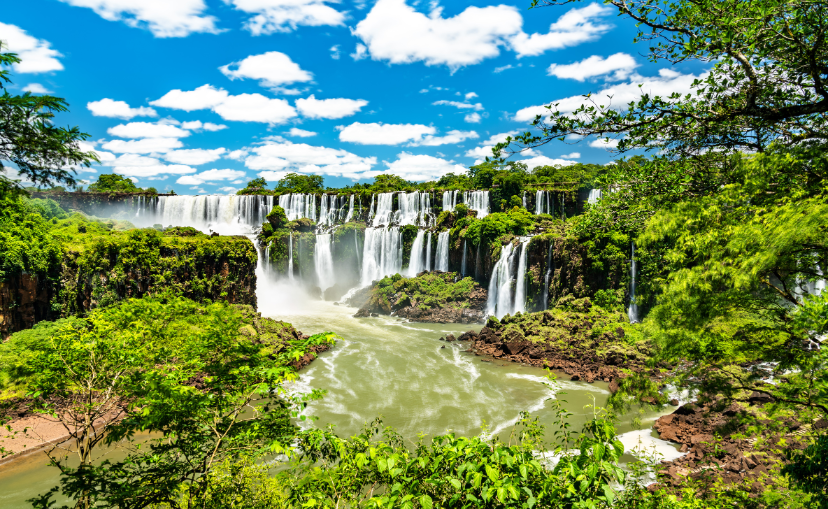
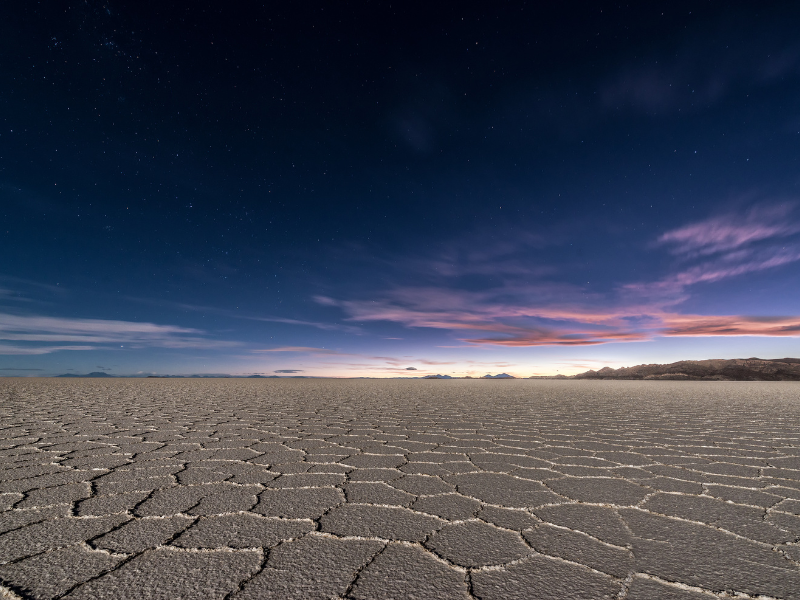
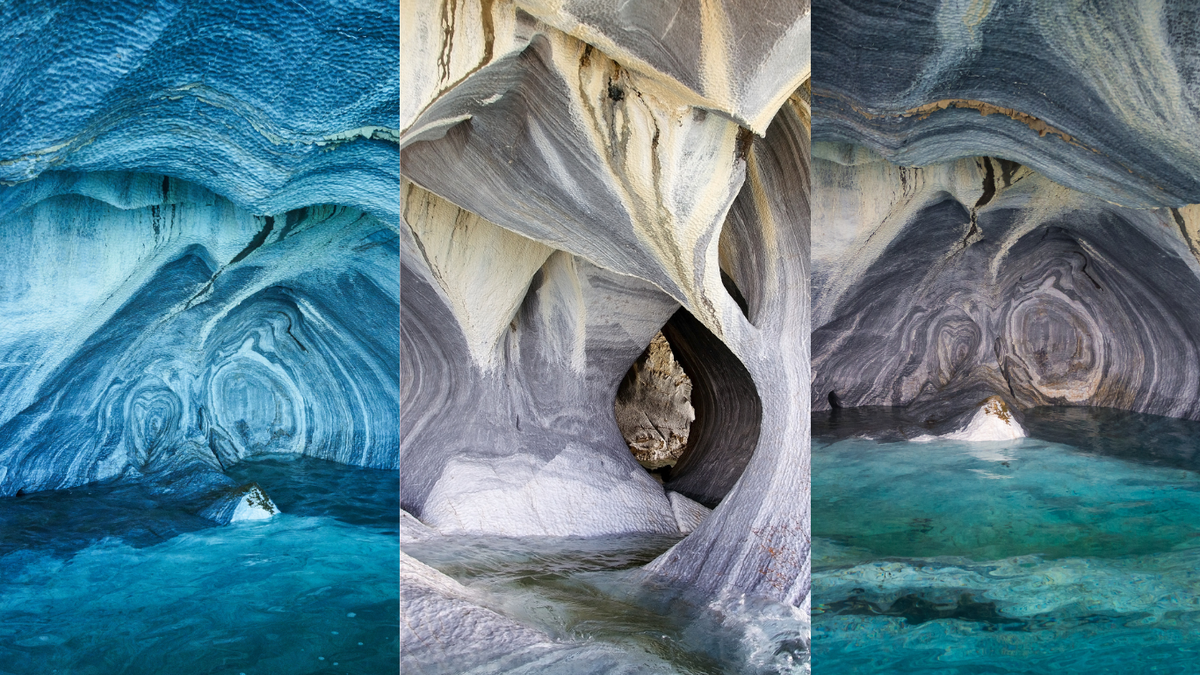
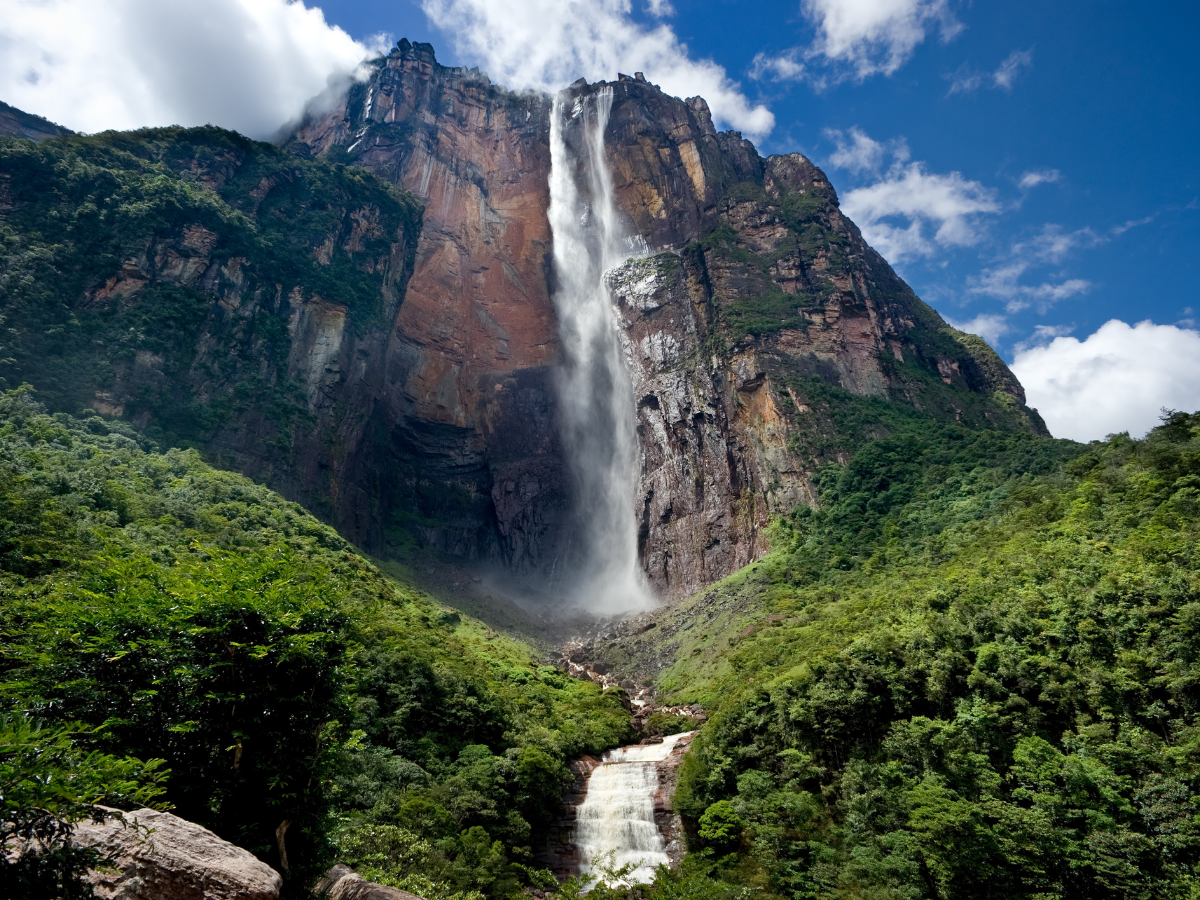
Looking For More National Park Articles?
- Most Beautiful National Parks
- Australia's Underrated National Parks
- National Parks That Allow Anywhere Backcountry Camping
- Indonesia's Most Beautiful National Parks
- Komodo National Park: Indonesia's Most Beautiful Park
- U.S. National Parks Guide
- Explore Denmarks National Parks
- Best Things To Do At Daintree National Park
- Most Beautiful U.S. National Parks




